|
|
Journey through Central India (Madhya Pradesh)
(24 Days /
23 Nights)
(Delhi -
Indore - Omkareshwar - Maheshwar - Mandu - Dhar - Ujjain - Bhopal -
Udaigiri - Sanchi - Bhimbetka - Satpura - Pench Nationalpark - Kanha
Nationalpark - Bandhavgarh-Nationalpark - Khajuraho - Orchha - Gwalior
- Agra - Delhi)
(to view the route of this tour on a Map please click
here)
|
|
The State
of Madhya Pradesh (Central India) is geographically the heart of
India. The largest part of the state is a high plateau, which is very
dry and hot in summer. The size and the geographic isolation of Madhya
Pradesh is known in history under the name of Malwa, this state of
invasions were largely unaffected. Nevertheless, Madhya Pradesh is the
southernmost state of the landlocked states in India. The size of the
state is so large that the time is 40 minutes ahead of the local time
zone in Ramanujgang, a town on the eastern border of the State and
Jabhua, on the western border. Inspite of its central position it has
all the characteristics of a marginal territory. The climate of Madhya
Pradesh is very hot and dry in summers and pleasant in winters. So,
the best time to visit Madhya Pradesh is from September to March. Some
of the major towns in Madhya Pradesh are Gwalior, Bhopal, Indore and
Jabalpur. Bhopal is the capital of Madhya Pradesh. Most of the people
speak Hindi or some dialect of Hindi. |
|
|
|
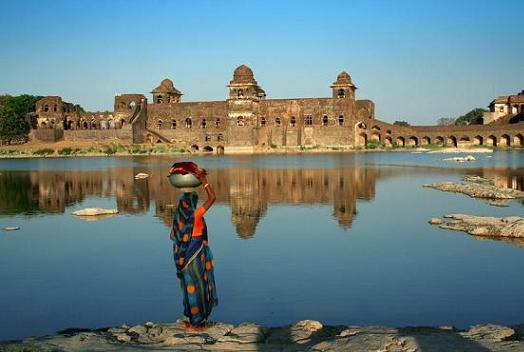 |
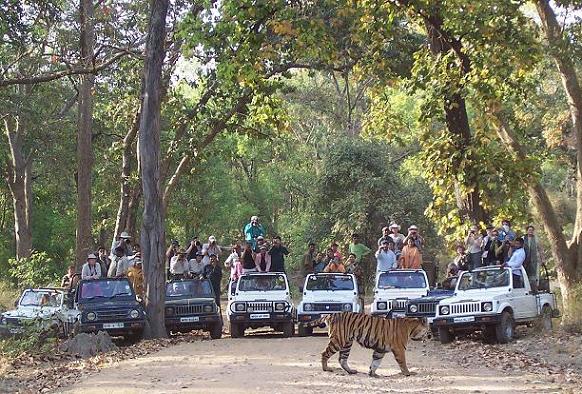 |
|
Mandu |
Bandhavgarh
National Park |
|
|
Day
01. Flight to India (Delhi)
Around midnight arrival in Delhi. The cosmopolitan City and capital
Delhi is the main gateway for travellers. You are met by an Indo
Vacations representative and transferred to your Hotel.
Day 02. Delhi - Indore (by air): Excursion to Omkareshwar and
Maheshwar (about 145 km / 3-4 hrs)
After breakfast we have flight to Indore, Arrival in
Indore, From the
airport, we proceed directly to Omkareshwar, situated about 77 km from
Indore. It is an important place of pilgrimage. It is a sacred island
shaped like the holy Hindu symbol ‘Om’ in the middle of the Narmada,
which has drawn pilgrims for centuries. The island is about 2 km long
and 1 km wide and is divided from north to south by a deep gully. The
Omkar Mandhata temple is situated at the eastern end of the island.
This temple is dedicated to the Lord Shiva. This temple is one of the
twelve Jyotirlinga in
India, a natural rock feature that is believed
to be representations of Siva in the form of a linga. This temple has
beautiful carvings. After the sightseeing we drive to Maheshwar.
Overnight stay at Maheshwar.
Day 03. Maheshwar - Mandu (about 65 km / 1.5 hrs)
Maheshwar is situated about 91 km. from Indore. Maheshwar is situated
on the northern banks of the Narmada river. Maheshwar has been
identified as Mahishmati, the ancient capital of King Kartivirarjun.
This ancient town is mentioned in the Ramayana and the Mahabharata and
revived by Ahilya Bai, the Holkar queen of Indore. This town is also
known throughout India for its Maheshwar saris. Maheshwar has
beautiful temples and a fort complex. The temples and fort complex are
reflected quietly in the river flowing below. The temples which can be
seen in Maheshwar are Kalshwara, Rajarajeshwara, Vithaleshwara and
Ahileshwar. First we have sightseeing tour of Maheshwar: Here is the
Chhatri of Ahalya Bai who died in 1795, she is the widow of Malhar Rao,
after the death of her husband she took over the government and
fulfilled their task with great care and abilities.
After the sightseeing we drive to royal city of Mandu. Mandu was
founded by Raja Bhoj in the 10th century as a fortress and retreat.
Mandu is the largest standing fortified town in the world. Mandu is
also known for a very romantic love story between its last King Baz
Bahadur and his love Rani Rupmati – a lovely Rajput peasant girl. It
is among the most interesting sights in central India. Overnight stay
at Mandu.
Day 04. Mandu - Dhar (about 75 km / 2 hrs)
Today morning we have sightseeing in Mandu. We visit Jahaz Mahal, a
palace shaped like a ship that floats serenely on the lake, Its shape
and kiosks looks like a heavenly ship sailing into eternity, it is
very famous place of Mandu. After this we visit Hindola Mahal, Champa
Baoli, Jami Masjid, Hoshang Shah’s Tomb, Rewa Kund (Palace of Baz
Bahadur), Roopmati Pavilion. After the sightseeing of Mandu we drive
to Dhar.
Dhar: Dhar was the capital of the Parmar kings. It was later conquered
by Muslims. Dhar was founded by Raja Bhoj. The monuments here are a
combination of Hindu, Afghan and Mughal architecture. We have a good
view of the city from the ramparts of the well-preserved forts. . In
the large stone mosque (Bhojashala) you can admire Sanskrit
inscriptions. Next to the mosque is the grave of the Muslim saint
Kamal Maula. After the sightseeing we dribe back to mandu. Overnight
stay in Dhar. |
|
|
|
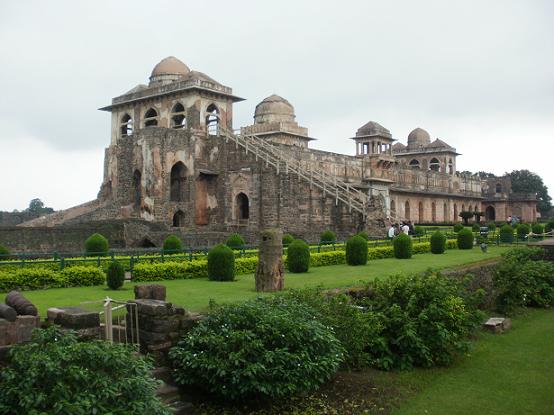 |
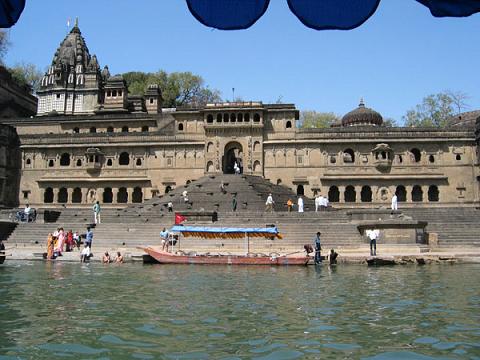 |
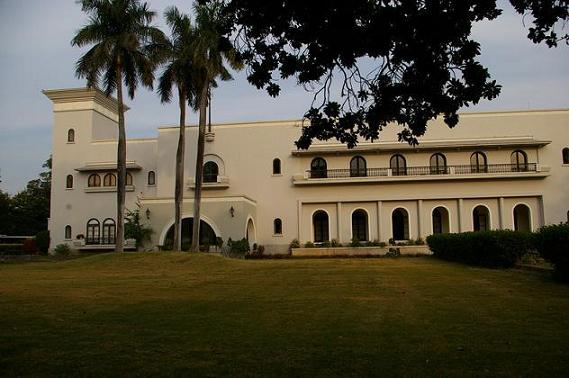 |
|
Mandu:
Jahaj Mahal |
Indore
Maheshwar |
Dhar
Jhira Back |
|
|
Day 05. Dhar - Ujjain - Indore (about 170 km / 4 hrs)
After breakfast drive to Ujjain. Ujjain is one of the greatest cities
of ancient India and one of the seven sacred cities of Hindus in
India. It is also one of the four towns where the Kumbh Mela is held
and plays as a host up to a million pilgrims who gather on the place
every twelve years. The city has had a long and distinguished history.
According to legend, the gods and the demons once churned the ocean
for Kumbha (a pot of divine nectar). First emerged a pot of vish or
poison. The Lord Shiva drank it down. The poison was so strong that
his divine neck turned blue and he was known as the Nilkantha or the
blue-necked one. It all happened at Ujjain and that is the reason for
its sacredness. Today we visit the famous temple of Ujjain.
Mahakaleshwar Temple, with its soaring Shikhar (tower) dominates the
skyline and life of Ujjain. This temple is dedicated to Lord Shiva and
houses the lingam of Lord Shiva. This temple is also an important
pilgrimage centre for Hindus. This temple is one of the 12
Jyotirlingas in India, and believed to be swayambhu (born of itself),
deriving its Shakti or power from within itself. Bade Ganeshji Ka
Mandir, located close to the tank near Mahakaleshwar Temple. This
temple enshrines a large sculpted image of Ganesh. Then we visit
Kaliadeh Palace, situated about 8 km from the city centre. The
Kaliadeh Palace is built on the banks of the Shipra river. This once
imposing building was built by Mahmud Khilji in 1458. Akbar stayed
here in 1601. After sightseeing in Ujjain we drive to Indore, where we
overnight stay. |
|
|
|
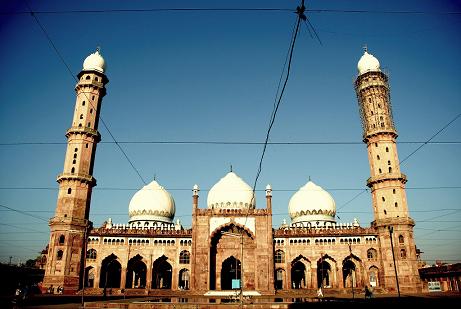 |
 |
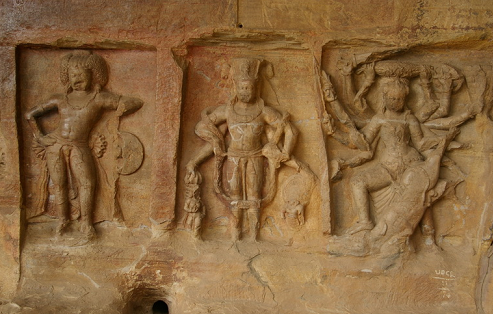 |
|
Bhopal Tajuldin
Mosque |
Sanchi Stupas
Western gateway |
Udaigiri Madhya
Pradesh |
|
|
Day 06. Indore - Bhopal (about 188 km / 4 hrs)
There is not many sightseeing places in Indore, but the city is a
convenient starting point for visiting Mandu. Indore makes a good,
prosperous impression and is a center of the textile processing
industry.
Indore was the historical capital of Holkars and is a center of the
textile processing industry. Today we visit places like Lalbagh Palace
and Museum, the Chattri Bagh, the Bada Ganesh and Annapurna Temple.
After the sightseeing of Indore we drive to Bhopal. Bhopal is the
capital of Madhya Pradesh which was founded by Raja Bhoj in 11th
century. Bhopal is known as the city of lakes. Arrival in Bhopal. In
the evening we have sightseeing in Bhopal. We will visit Taj -ul-
Mosque, Birla Museum, Laxmi Narayan Temple, Gandhi Bhawan and also
enjoy the boat ride in the lake. Then apply drive to the Bhimteke
caves.
Day
07. Bhopal: Excursion Udaigir and Sanchi
Today we have excursion to Sanchi
(UNESCO Heritage Site) and Udaigiri. Stupa of Sanchi is one of the
oldest stone structure. The construction work of this stupa was look
after by Ashoka's wife, Devi herself, who was the daughter of a
merchant of Vidisha. Sanchi was also her birthplace and also the venue
of her and Ashoka's wedding.The Udayagiri Caves are a Hindu tradition
site which are situated near Vidisha in Madhya Pradesh. They were
decorated properly and reworked under the command of Chandragupta II,
Emperor of the Gupta Empire, in the late 4th and 5th century CE.
Udayagiri Caves are most important archaeological sites from the Gupta
period and are presently a tourist site under the protection of the
Archaeological Survey of India. |
|
|
|
 |
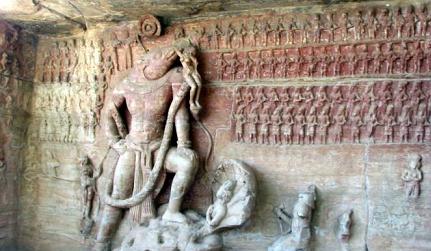 |
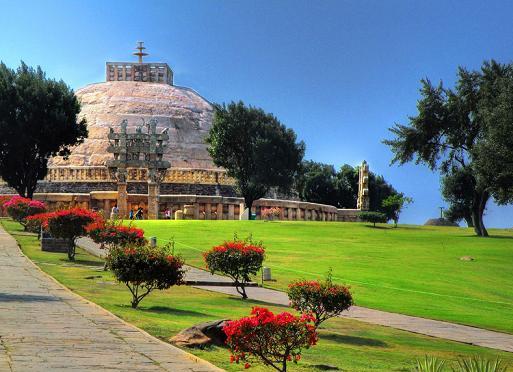 |
|
Udaigiri Madhya
Pradesh |
Udaigiri Madhya
Pradesh |
Sanchi Stupas |
|
|
Day
08. Bhopal - Bhimbetka - Satpura (about 180 km / 4 hrs)
Today we take an excursion to Bhimbetka. Bhimbetka is an
archaeological place in the Indian state of
Madhya Pradesh. It is
included in UNESCO World Heritage Site. Bhimbetka Hill has the richest
collection of prehistoric paintings associated with many other
archaeological discoveries. The site was discovered by V.S. Wakanker
of the Vikram University, Ujjain, in 1957 and systematic digging at
the site has continued since 1971. The hill is located in the middle
of a dense deciduous forest and there are over 30 species of trees
with edible fruit, flower seeds and tubers. There is also still a rich
wildlife including several species of deer, wild boar, sloth bear,
antelope, leopard, jackal, scaly anteater and a wide range of species
of birds. Perennial springs provide the essential year round water
supply. In this place, over 700 caves with Neolithic rock-paintings
have been discovered. The oldest paintings are at least as old as
those of the Pyrenees. Over 500 caves contain prehistoric and later
paintings and a smaller number have evidence of Stone Age habitation
from the Lower Palaeolithic period to the late Mesolithic. Some of the
cave paintings are quite small, while some are about 10 metres long.
Red and white are the dominant colours used, but green and yellow are
also found. The paintings belongs to three periods. The prehistoric
phase is dominated by wild life paintings of cattle, boar, tiger, deer
engaged in various activities, and varies from tiny miniatures to life
size and often life-like representation. Hunting is a common theme,
the humans during this period being shown simply as “stick men”. Some
women are shown, occasionally pregnant. In the transitional period,
men are shown grazing or riding animals, but animals lose their
proportions and naturalism. The later period is quite different, and
animals and animal hunts are replaced by battle scenes with men riding
on elephants and horses with spears, bows and arrows and probably date
from the early centuries AD. Bhimbetka is designed as a place of
residence of the hero Bhima of Indian epic
Mahabharata, Bhimbetka was
first mentioned in Indian archeological records based on information
from local tribal people as a Buddhist site.
After sightseeing we drive to Satpura. Overnight stay in Satpura.
Day 09. Satpura
Today we have morning and evening safaris in Satpura National Park.
The Satpura National Park was founded in 1981 and extends over 524
square kilometers. It is covered with evergreen sal, teak and bamboo
forests. In the park, the bison, tigers, leopards, bears and four horn
antelope, nilgai and a variety of birds are seen. In Satpura National
Park we view a wide variety of animals. Overnight stay in a Jungle
Lodge in Satpura.
Day 10. Satpura - Pench National Park (about 250 km / 6 hrs)
Today we drive to Pench National Park. The Pench National Park extends
along the Pench river divided over 275 square miles between the states
of Madhya Pradesh and Maharashtra. It derives its name from Pench
River that flows through the National park from north to south
dividing the park into almost equal western and eastern halves. This
river is the major source for water in this National Park. It was
declared a sanctuary in 1977 but was given the status of National park
in 1983. It was established as Tiger Reserve area in 1992.
Day 11. Pench National Park
We have two Jungle Safaris in Pench National Park (Morning and
Afternoon). Tiger is the main cat species of the park present in large
numbers but spotted very rarely. Commonly seen wild attractions of the
park are nilgai, jackal, sambhar, wild boar and chital. Other wild
animals are jungle cat, barking deer, leopard, gaur, chowsingha, sloth
bear, wild dog, porcupine, monkey, fox and striped hyena. There are
more than 170 species of birds in the park including several migratory
birds. Some of them are red-vented bulbul, crimson-breasted barbet,
magpie robin, peafowl, junglefowl, crow pheasant, racket-tailed drongo,
lesser whistling teal, pintail, herons, egret and shoveler. This
national park is rich with chitals i.e. axis axis or more commonly
spotted deer. Overnight stay in Tiger Resort.
|
|
|
|
 |
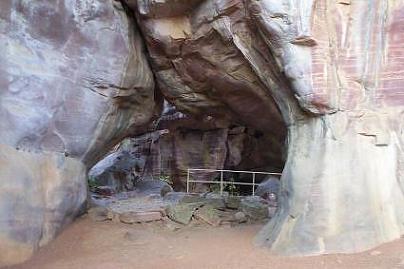 |
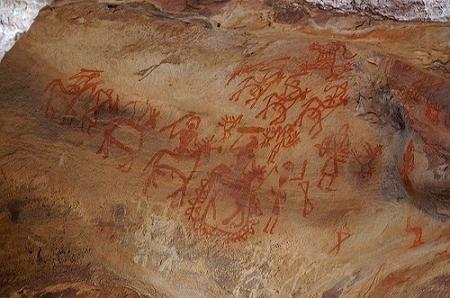 |
|
Pench National
park |
Bhimbetka |
Bhimbetka |
|
|
Day
12. Pench National Park - Kanha National Park (about 130 km / 4 hrs)
Today in the morning after having breakfast we drive to
Kanha National Park.
Kanha National Park is the largest wildlife sanctuary in Asia and is
one of the first Project Tiger reserves in India. It was founded in
the year 1955 and covers an area of over 940 square km in the two
districts Mandla and Balaghat. Together with a surrounding buffer zone
of 1,067 km˛ and the neighboring 110 km˛ Phen Sanctuary it forms the
Kanha Tiger Reserve.Hundreds of different species of birds and about
twenty-two species of mammals live here between deciduous forests,
savannah grasslands, hills and rivers. Since the establishment of the
park, even the tiger population has doubled. The rest of the day is at
leisure.
Day 13. Kanha National Park
Today in the morning we have jeep safari in Kanha National Park and
watch the activities of various animals like Tiger, Barasingha,
Spotted deer, Blackbuck, Porcupine, Grey Langurs, Mongoose, Hyena,
Jungle Cat, Leopard, Nilgai, Gaur, Indian Bison and Wild Pig. Kanha is
famous for its large mammals. The park has a good population of tiger.
Kanha is famous for its large mammals. In addition, other large
carnivore animals are also seen in the park.
Day 14. Kanha National Park - Bandhavgarh national park (about 240
km / 8 hrs)
Today in the morning after having breakfast we drive to Bandhavgarh
National Park.
Bandhavgarh National Park is situated amidst the Vindhyas
mountain range in Madhya Pradesh. The famous white tigers were first
found in the Bandhavgarh National Park. The other wildlife attractions
in the park besides Tiger includes Regal Gaur, the Muntajac, Jungle
Cat, Ratel, Porcupine, Rhesus Macaque, black faced Langur, Nilgai,
Chital, Chinkara, Sloth Bear, Four-horned Antelope, Deer, Striped
Hyena, Fox, Jackal, Leopard, Mongoose and Wild Boar. The deep valleys
of hilly Vindhyan mountains are covered with teak and bamboo forests,
open grasslands and Sal-bamboo and mixed forests offer excellent
opportunities for wildlife and bird watching. The name Bandavgarh
comes from the highest mountain of the area (807 m).
Day 15. Bandhavgarh National Park
Today we have two jungle safaris in Bandhavgarh National Park (Early
Morning and Late Afternoon). We watch the activities of various
animals like black faced Langur, Nilgai, Chital, Chinkara, Sloth Bear,
Four-horned Antelope, Deer, Striped Hyena and Tigers. The park is
located in the districts of Shahdol and Jabalpur in the state of
Madhya Pradesh. The park was founded in 1968 and covers an area of 437
square kilometers, which is mostly covered with deciduous forest, vast
grasslands and bamboo woods.
Day 16. Bandhavgarh National Park
Early morning and late afternoon Jungle Safaris with the leader in the
conservation area of Bandhavgarh National Park. The deep valleys of
hilly Vindhyan mountains are covered with teak and bamboo forests,
open grasslands and Sal-bamboo and mixed forests offer excellent
opportunities for wildlife and bird watching. |
|
|
|
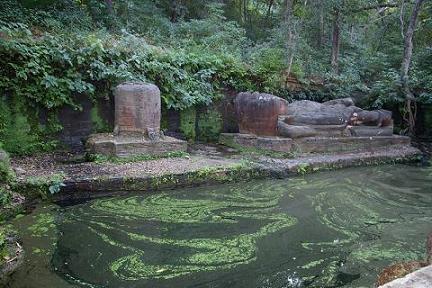 |
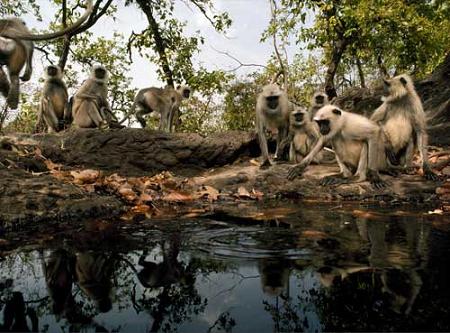 |
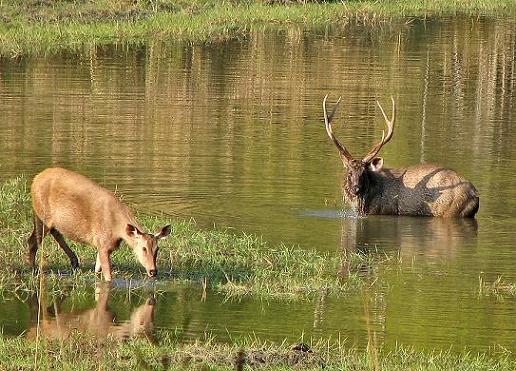 |
|
Bandhavgarh
Nationalpark |
Bandhavgarh
Nationalpark |
Kanha
Nationalpark |
|
|
Day
17. Bandhavgarh National Park - Khajuraho (about 226 km / 7 to 8 hrs)
Today we have a long drive to Khajuraho.
Khajuraho was the capital of the
Chandela dynasty. The Chandela Kings claimed descent from the moon.
The temples of Khajuraho are among the finest examples of temple
craftsmanship in the whole of India. Arrival in Khajuraho in the
evening. The rest of the day at leisure.
Day 18. Khajuraho
Today we visit the temple complex of
Eastern Group
and Western Group
to see the most beautiful temples in India. The temples of Khajuraho
are considered the epitome of Hindu architecture and sculpture art.
Most famous among them is the Laxmana Temple which is dedicated to god
Vishnu. The presence of erotic sculptures in the Temples at Khajuraho
is one of the expressions among others of the celebration of all human
activities displaying different aspects of Hinduism. The figures of
Apsaras, the sky dancers, can be seen at each temple. The village and
market of Khajuraho can be explored on foot from the hotel.The rest of
the day is at leisure to relax
Day 19. Khajuraho - Orchha (about 175 km / 3-4 hrs)
Today we drive to Orchha via Jhansi.
In Jhansi we visit the fort of Jhansi.
Jhansi Fort is not only one of the most fortified fort in Uttar
Pradesh, but also in India. Raja Bir Singh Deo of Orchha built this
fort in the early 17th Century. Jhansi The museum is located in the
Fort of Jhansi. The museum offers not only an insight into the history
of Jhansi, but the entire region of Bundelkhand. The museum offers an
insight into the life of Chandela dynasty. Then we drive to Orchha.
Orchha's grandeur has been captured in stone, frozen in time, a rich
legacy to the ages. In this medieval city, the hand of time has rested
lightly and the palaces and temples built by its Bundela rulers in the
16th and 17th centuries retain much of their pristine perfection. In
the afternoon arrival in Orchha. Rest of the day at leisure. |
|
|
|
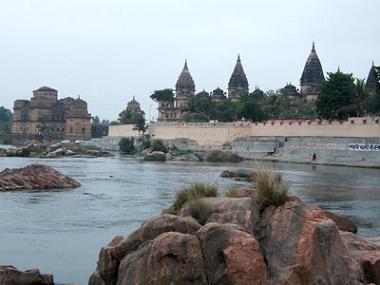 |
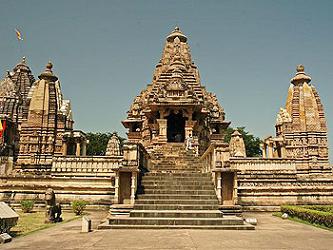 |
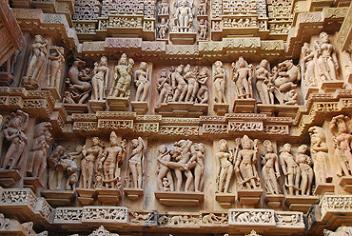 |
|
Orchha |
Laxaman Temple
Khajuraho |
Ueberwaeltigend
Khajuraho Tempel |
|
|
Day 20. Orchha - Gwalior (about 119 km / 3.5 hrs)
Today we drive to Gwalior. Gwalior's
strategic position between North and South India has made it's Fort an
important possession and it was captured by several ruling houses.
Some left almost as soon as they came, while others stayed on to build
and beautify the citadel. We visit the fort of Gwalior today itself.
Rest of the day at leisure.
Day 21. Gwalior - Agra (about 120 km / 3.5 hrs)
Today we drive to Agra. In the afternoon we will visit the
Agra Fort, built by three of the
greatest Mughal emperors. The construction of this massive structure
began in 1565 under Akbar's reign and continued till the time of his
grandson's reign, Shah Jahan who built the impressive imperial
quarters and mosque. Rest of the day is at leisure. |
|
|
|
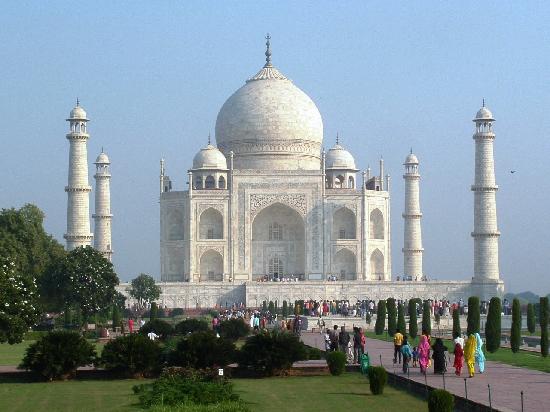 |
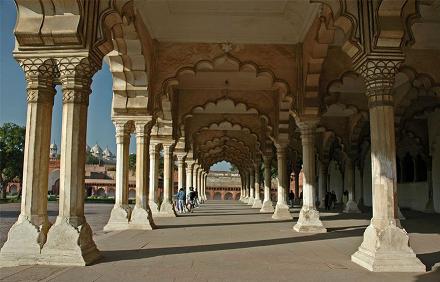 |
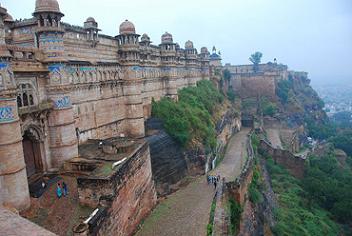 |
|
Agra Taj Mahal |
Agra Diwan I Am |
Fort Gwalior |
|
|
Day 22. Agra - Delhi (about 200 km / 4 hrs)
Today morning visit to the most beautiful and famous building
Taj Mahal, an enduring monument to
love, with a continually fulfilling beauty. It was built by the Mughal
Emperor Shah Jahan between 1631-52, as a tomb and memorial to his
beloved wife Mumtaz Mahal (Jewel of the Palace), who died at the age
of 39 giving birth to her 14th child. We spend enough time at Taj
Mahal to take this impressive memory home. After the visit of Taj
Mahal we have a look at the famous fine marble inlay work which is
still being done in Agra by the descendants of the families of
builders and artists of the Taj Mahal. After the sightseeing of Agra
we drive to Delhi.
Day
23. Delhi
In the morning we have sightseeing in Old Delhi. We take a Rickshaw
Ride parallel to the Red Fort
through the old city and famous Silk Road and Silver Bazaar.
Sightseeing of Old Delhi includes "Rajghat",
the site where Mahatma Gandhi was cremated and
Jama Masjid, the great mosque
of old Delhi. Today we also visit the famous "Humayun
Tomb" which is the first substantial example of Mughal
architecture in India and "Qutub
Minar". "Qutub Minar" is 71 meter high and consists of five
stories. In 1199 work began on this tower which was intended to be the
most glorious tower of victory in the world. This tower was damaged
twice and repaired in 1326 and 1368. Before we proceed to the Hotel we
drive through the embassy area in New Delhi where we visit the
India Gate and see some
impressive Government Buildings.
Day 24. Flight to Home Destination
The day is today at leisure. You have to checkout from the hotel upto
12.00 am. Depending on your departure time you will be transferred to
airport / Railway station of / Bus station for onwards journey.
(End of
Tour) |
|
|
|
Tour
Reservation
To get more
information or to book this tour please submit the
Query Form
or send us an
E-Mail ! Your
booking will be activated only after we get a reconfirmation from
your side.
About Hotels:
We provide you the accommodation as per your budget mentioned above
in the table of hotels category for any of the booked tour. Hotels
provided by us are from budget to luxury class hotels. The criteria
for selecting hotels by us remains the best value of your money. We
also provide you wherever possible accommodation in heritage hotels.
Heritage Hotels are old Palaces, Forts and Grand mansions of
Maharajas which have been later renovated and converted into Hotels.
Rooms are decorated all individually. Rooms are comfortable,
romantic and present the flair of olden Maharaja days.
|
|

